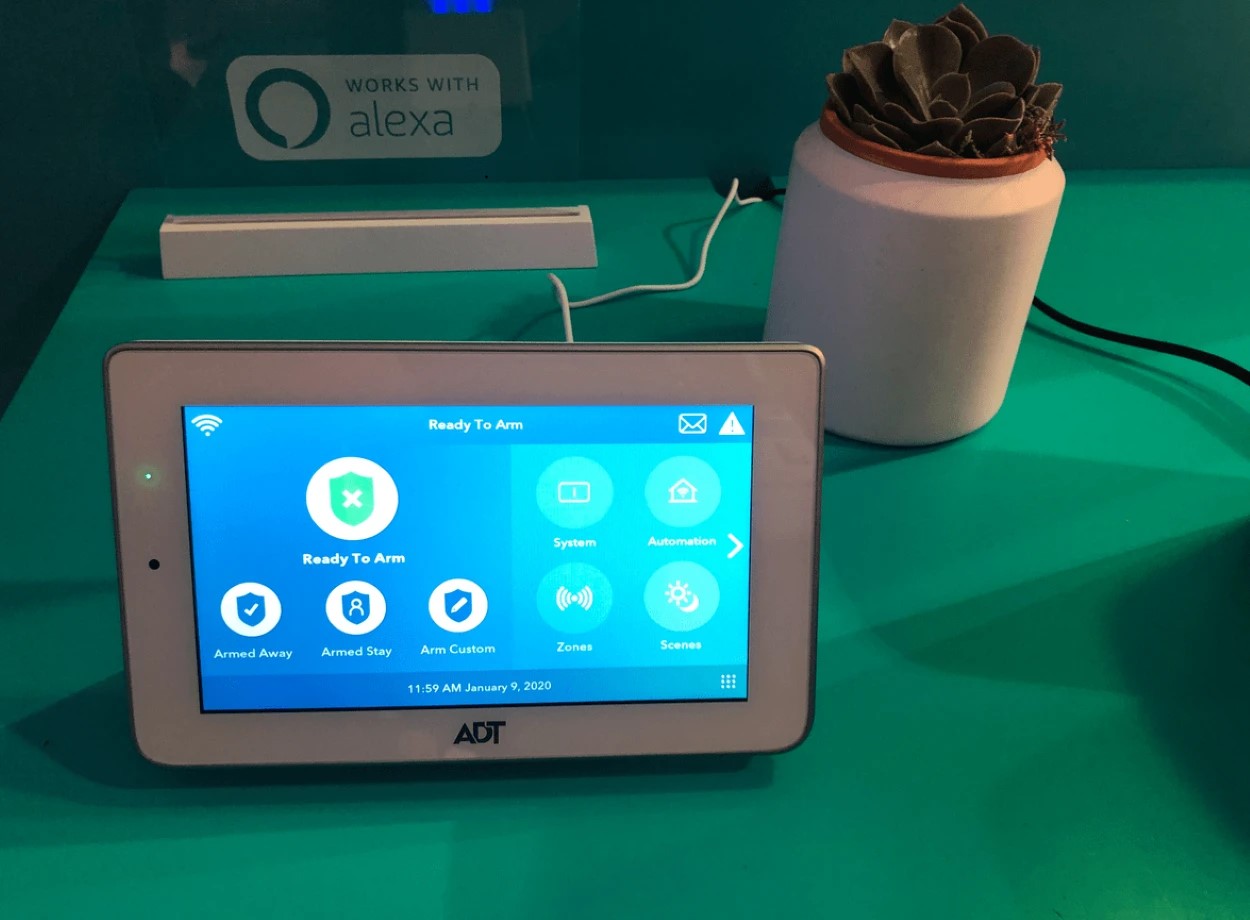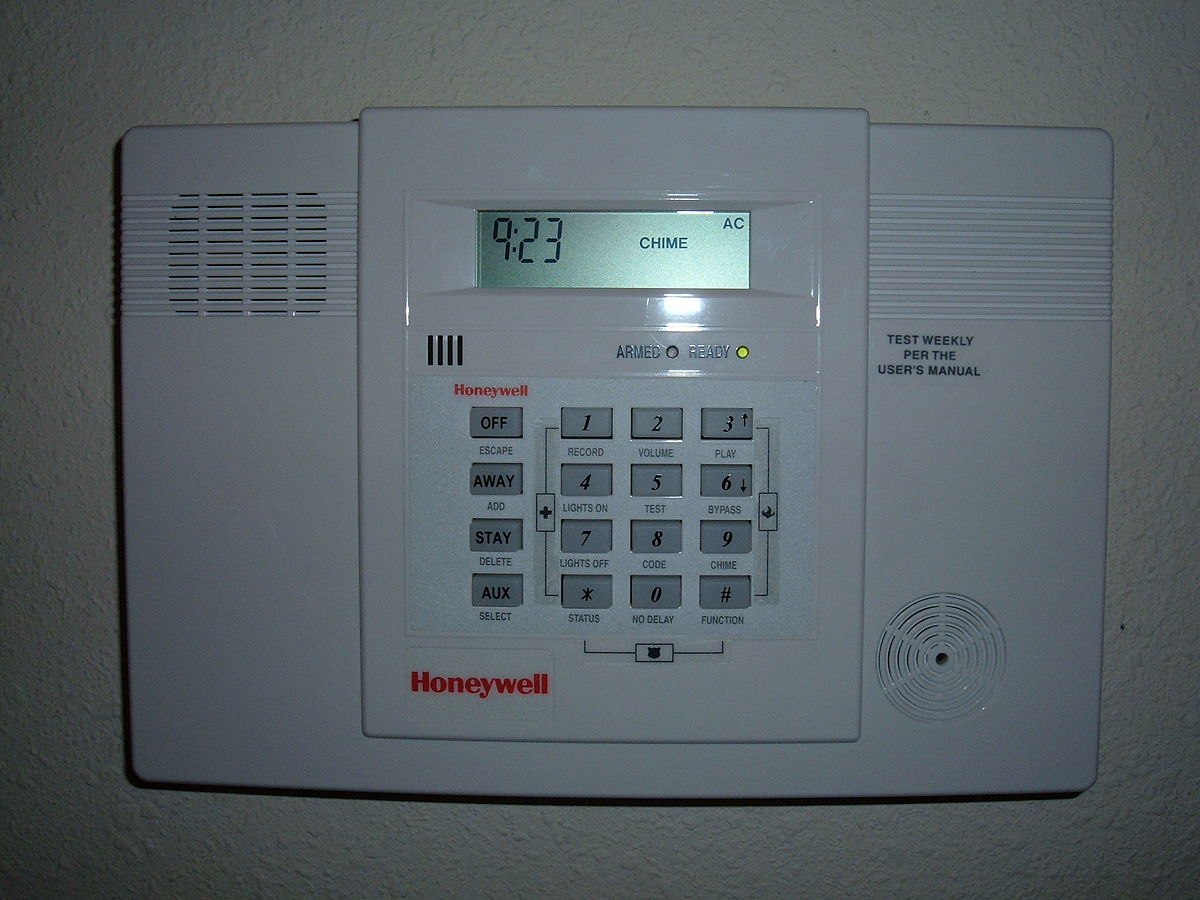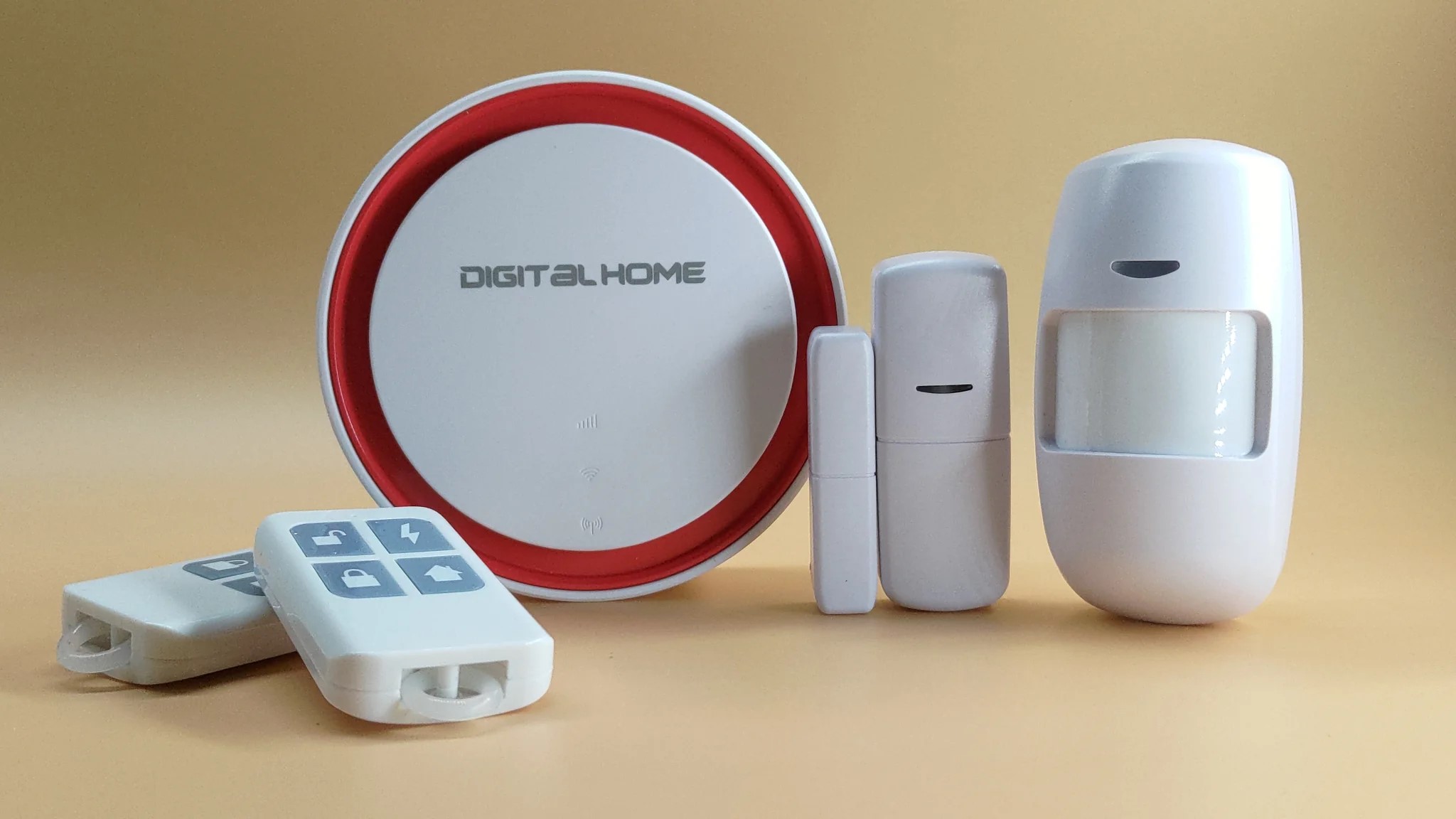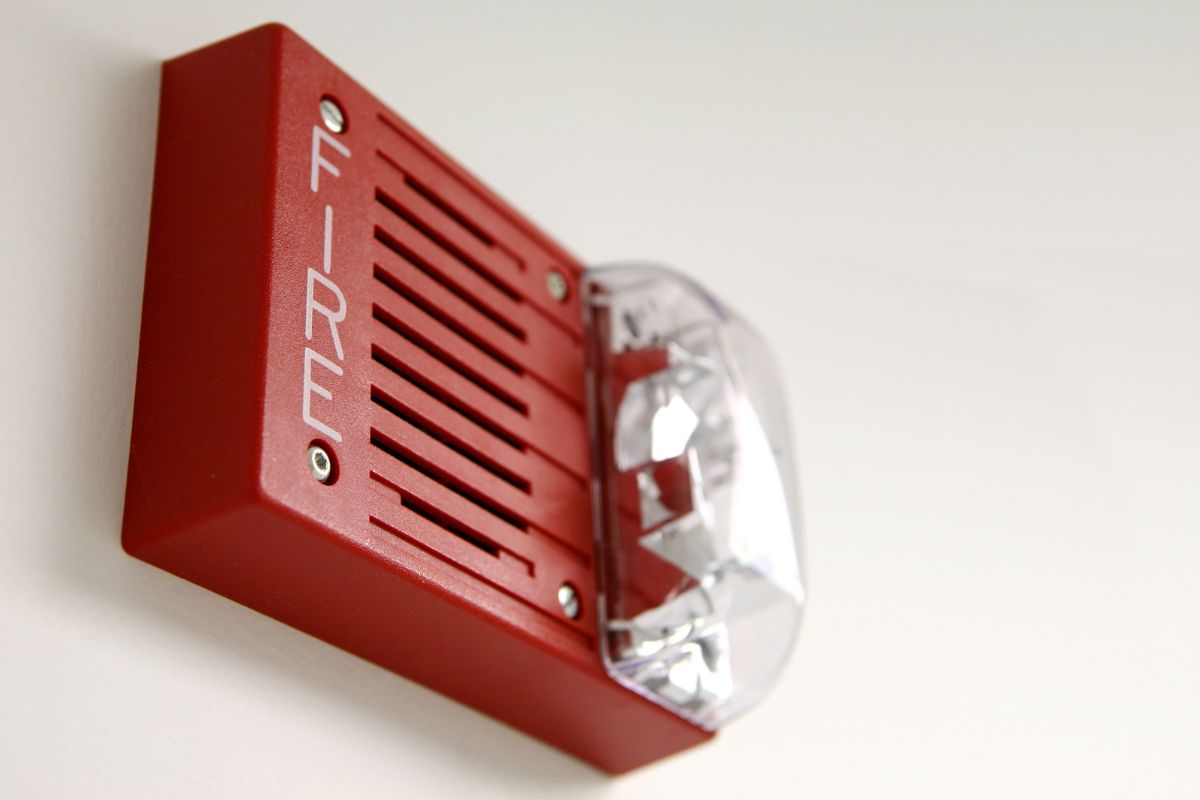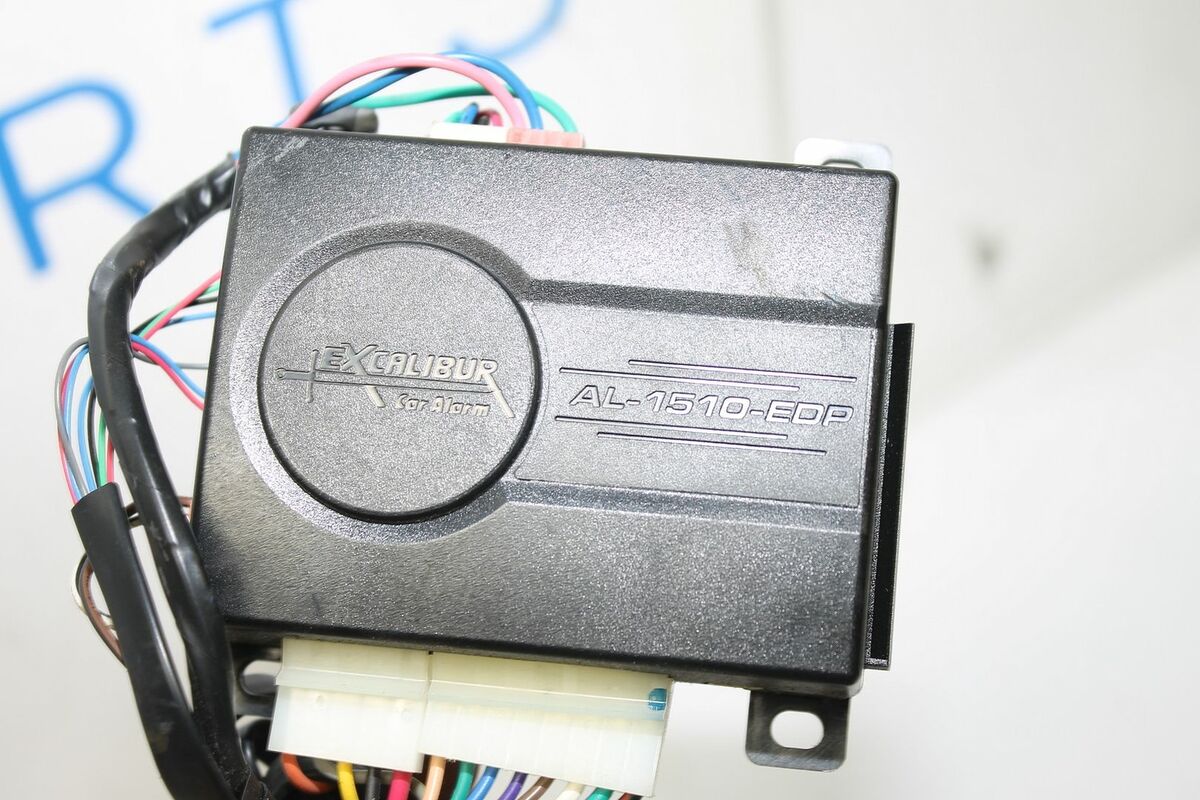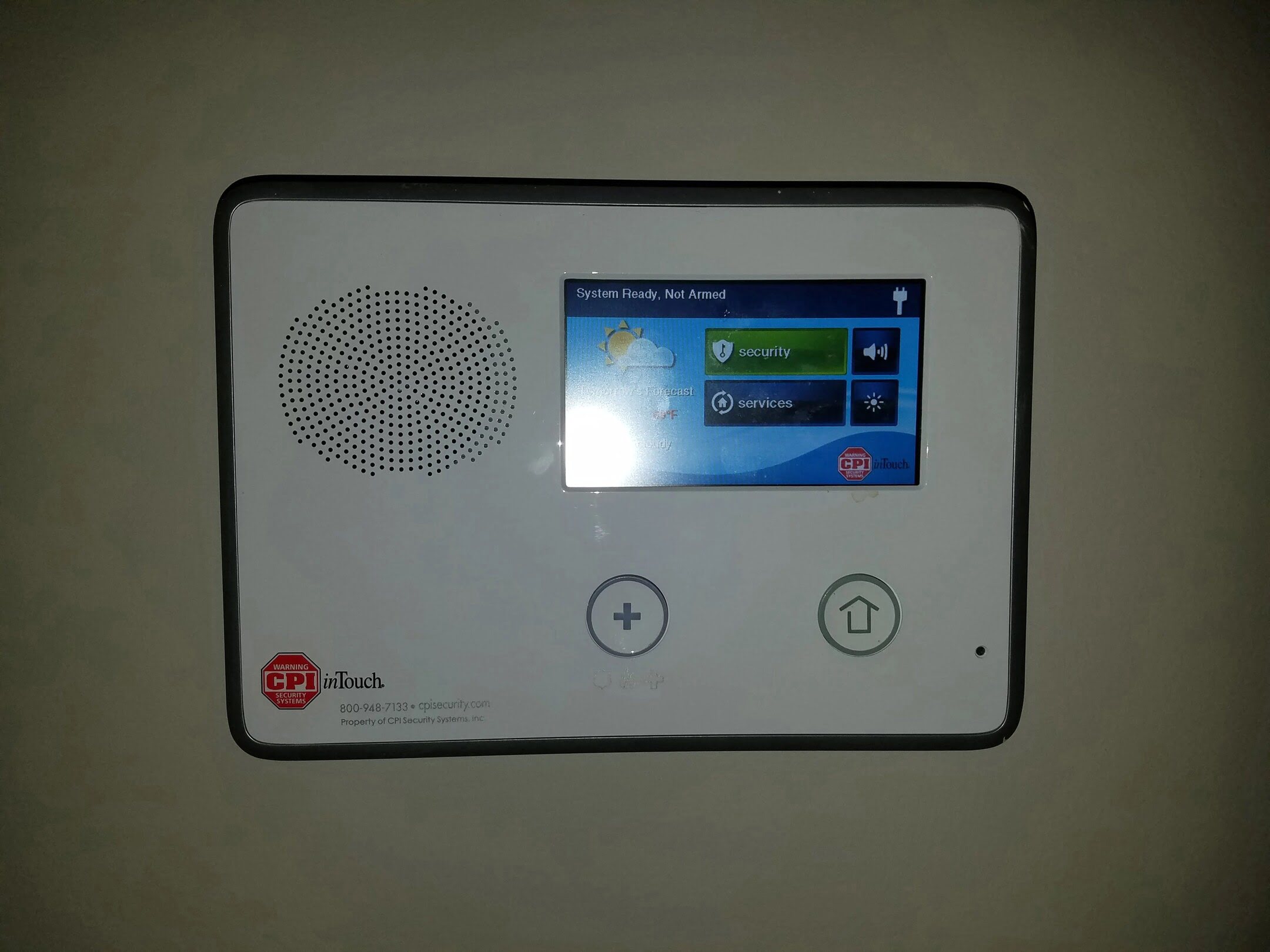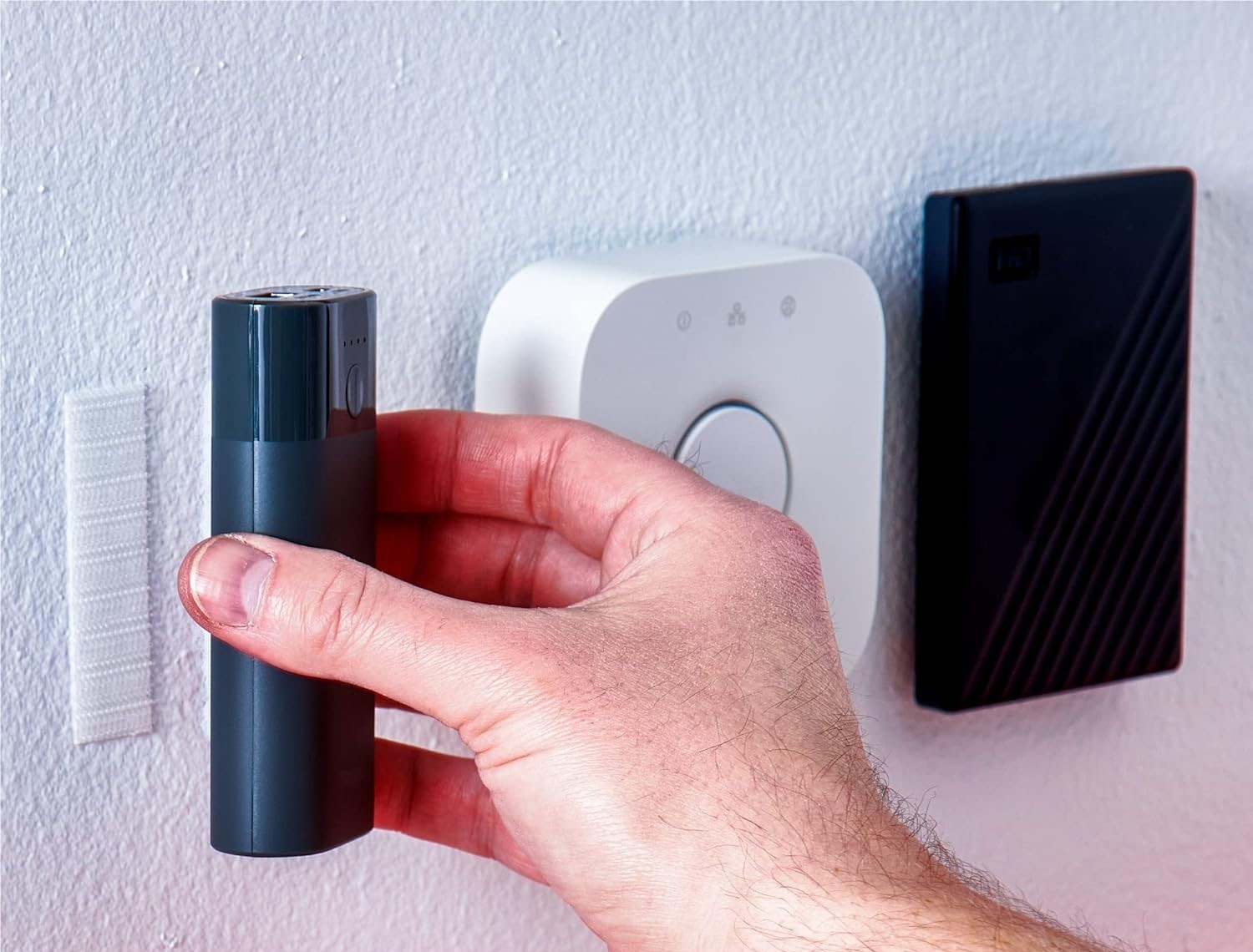Home>Home Security and Surveillance>How Are Home Alarm Systems Hacked
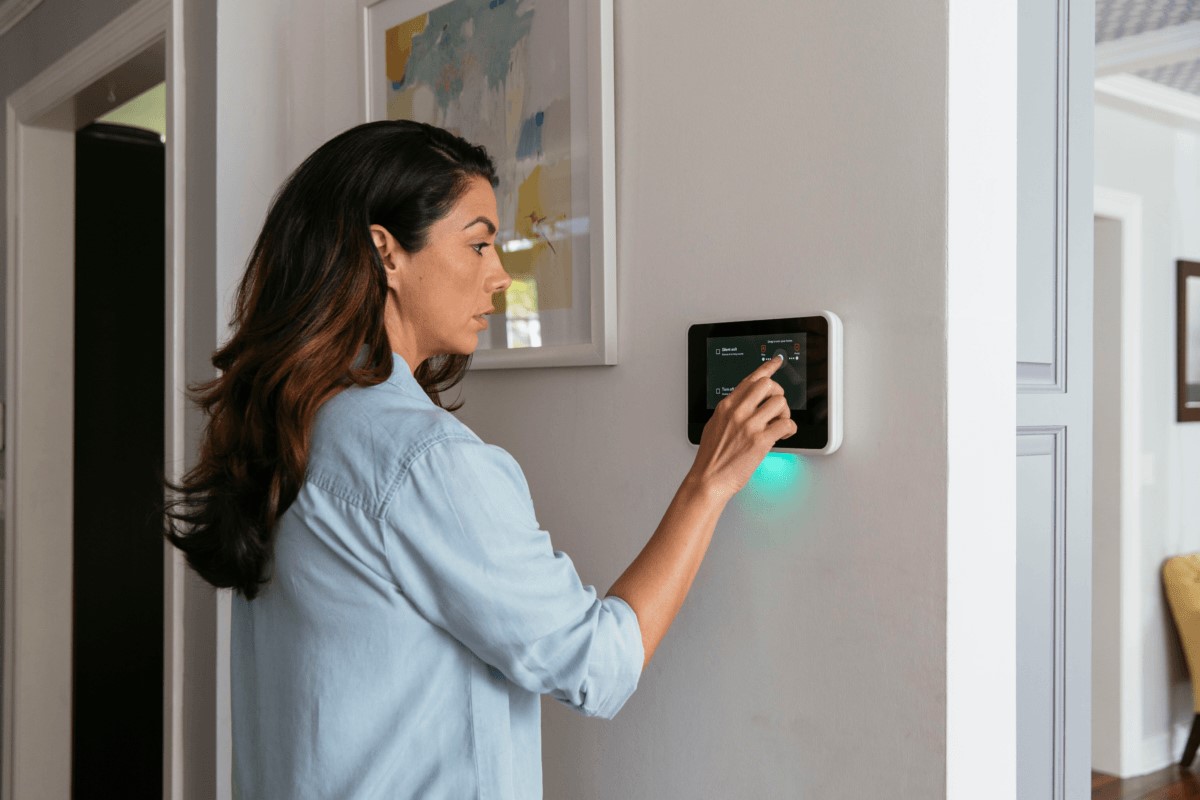

Home Security and Surveillance
How Are Home Alarm Systems Hacked
Modified: August 28, 2024
Learn how home alarm systems can be hacked and how to protect your home from intruders. Enhance your home security and surveillance with these tips.
(Many of the links in this article redirect to a specific reviewed product. Your purchase of these products through affiliate links helps to generate commission for Storables.com, at no extra cost. Learn more)
Introduction
Welcome to the world of home security and surveillance! In today’s digital age, where connectivity and convenience are paramount, it is essential to ensure that our homes are protected from potential threats. Home alarm systems have become a popular choice for homeowners looking to reinforce their security measures and gain peace of mind.
However, it is crucial to understand that even the most advanced home alarm systems can be susceptible to hacking attempts. Cybercriminals are constantly evolving their tactics and techniques to exploit vulnerabilities in these systems, potentially compromising the safety of your home and loved ones.
In this article, we will delve into the world of home alarm system hacking, exploring the common vulnerabilities that exist and how cybercriminals exploit them. We will also offer valuable insights into how you can better protect your home and safeguard your alarm system against these threats.
So, buckle up and get ready to dive into the fascinating realm of home alarm system security!
Key Takeaways:
- Protect Your Home Alarm System
Regularly update firmware, change default passwords, enable encryption, and enhance physical security to safeguard your home alarm system. Stay informed about emerging threats and consider professional monitoring services for added protection. - Beware of Hacking Threats
Be cautious of wireless signal jamming, intercepting alarm signals, and remote access exploits. Stay vigilant against social engineering and phishing attacks. Implement strong authentication and regularly update software to protect your home alarm system.
Read more: How To Use Tyco Alarm Systems
Understanding Home Alarm Systems
Before we explore the vulnerabilities and exploits, let’s first understand how home alarm systems work. Home alarm systems are designed to deter intruders, detect unauthorized entry, and notify homeowners or a monitoring service when a security breach occurs.
Typically, a home alarm system consists of several components:
- Control Panel: The brain of the system, the control panel is responsible for receiving signals from sensors and triggering alarms or alerts.
- Keypad: This interface allows homeowners to arm or disarm the system using a unique PIN or password.
- Door and Window Sensors: These sensors are strategically placed on doors and windows to detect when they are opened or closed.
- Motion Sensors: These sensors detect movement within a designated area and trigger an alarm if unauthorized activity is detected.
- Siren: The siren emits a loud, attention-grabbing sound to alert homeowners and potentially scare away intruders.
- Monitoring Service: Many home alarm systems offer the option to connect to a professional monitoring service. In case of an alarm, the monitoring service is notified and can dispatch appropriate assistance.
Home alarm systems can also be connected to other smart devices in the house, such as cameras, smart locks, and even voice assistants. This integration allows homeowners to have a comprehensive and interconnected security ecosystem.
Now that we have a basic understanding of home alarm systems, let’s uncover the vulnerabilities that cybercriminals may exploit to gain unauthorized access.
Common Vulnerabilities in Home Alarm Systems
Despite the advancements in technology, home alarm systems are not immune to vulnerabilities that can be exploited by hackers. Understanding these weaknesses is crucial for homeowners to take proactive measures to protect their systems. Let’s take a look at some of the common vulnerabilities in home alarm systems:
- Outdated Firmware: Home alarm systems rely on firmware to function properly. However, outdated firmware can contain security flaws that hackers can exploit. It is important to regularly update the firmware of your alarm system to ensure it has the latest security patches.
- Weak Default Passwords: Many home alarm systems come with default usernames and passwords that are easy to guess or widely known. Failing to change these default credentials increases the risk of unauthorized access. Always change the default passwords to strong, unique ones.
- Insufficient Encryption: Encryption plays a vital role in securing the communication between the various components of a home alarm system. If the encryption mechanisms are weak or nonexistent, hackers can intercept the signals and gain access to sensitive information. Ensure that your system uses strong encryption protocols to protect your data.
- Physical Security Weaknesses: While hacking is often associated with digital exploits, physical security weaknesses can also be exploited. For example, if the control panel or sensors are easily accessible, an attacker can tamper with them or disable the system altogether. It is crucial to install the components in secure locations and implement additional physical security measures.
- Wireless Signal Jamming Attacks: Wireless home alarm systems rely on radio frequency signals to communicate between components. Hackers can use signal jammers to disrupt these signals, rendering the system useless. To mitigate this vulnerability, look for systems with anti-jamming capabilities.
- Intercepting and Decoding Alarm Signals: Cybercriminals with advanced knowledge can intercept and decode the signals transmitted by a home alarm system. By doing so, they can potentially disable or bypass the system without triggering an alarm. Implementing additional security measures, such as encrypted signaling, can help protect against this type of attack.
- Remote Access and Control Exploits: Many home alarm systems offer remote access and control features through mobile apps and websites. If these portals are not adequately secured, hackers can gain unauthorized access and control over the system. Always ensure that you use strong passwords, enable two-factor authentication, and keep the remote access features up to date.
- Social Engineering and Phishing Attacks: Hackers may attempt to trick homeowners or alarm system users into revealing sensitive information or login credentials through social engineering techniques or phishing attacks. Stay vigilant against suspicious emails, calls, or messages and never share personal or sensitive information unless absolutely necessary.
Being aware of these vulnerabilities is the first step in securing your home alarm system. In the next section, we will explore some of the potential exploits that hackers may employ to compromise your system.
Exploiting Physical Security Weaknesses
While hacking techniques are often associated with digital exploits, it’s important to remember that physical security weaknesses in home alarm systems can also be exploited by attackers. Let’s take a closer look at how hackers can exploit physical vulnerabilities:
Tampering with Control Panels and Sensors: Home alarm control panels and sensors are usually located in easily accessible areas, such as hallways or utility rooms. Hackers can physically tamper with these components, disconnecting them or disabling their functionality. It’s crucial to install these components in secure locations, such as locked cabinets or hidden spots, to prevent unauthorized tampering.
Cutting Communication Cables: Many home alarm systems rely on communication cables to transmit signals between the various components. If an attacker gains physical access to your property, they could cut these communication cables, rendering your alarm system ineffective. To mitigate this vulnerability, consider using wireless alarm systems or securing the cables in hard-to-reach or concealed areas.
Blocking Sensors: Motion sensors play a vital role in detecting unauthorized movement within your home. Hackers can exploit physical security weaknesses by blocking these sensors using objects like tape or stickers. Regularly check your motion sensors to ensure they’re clear of any obstructions that could compromise their effectiveness.
Disabling Alarms: Physical tampering can also involve disabling the audible alarms associated with home alarm systems. Attackers could remove batteries, cut power supplies, or even cover the alarms to prevent their detection. Inspect your alarms regularly to ensure they’re functioning correctly and securely installed to deter tampering.
It’s important to note that physical security weaknesses in home alarm systems can often be mitigated by implementing additional physical security measures. Here are some tips:
- Install your home alarm system components, particularly the control panel and sensors, in discreet or secure areas that are not easily accessible.
- Use tamper-resistant screws and covers to secure your alarm system components, making them more resistant to physical manipulation.
- Consider installing security cameras that monitor key areas of your property, including the control panel and entry points, to deter physical attacks and provide evidence in case of a breach.
- Connect your home alarm system to a monitoring service that can quickly respond to any tampering or physical security breaches.
By implementing these physical security measures, you can significantly reduce the risk of physical exploitation and enhance the overall security of your home alarm system.
Next, we’ll explore another method that hackers may use to compromise home alarm systems: wireless signal jamming attacks.
Wireless Signal Jamming Attacks
Wireless home alarm systems rely on radio frequency signals to transmit information between the various components. This wireless communication makes the system convenient and easy to install, but it also introduces a vulnerability to wireless signal jamming attacks.
What is a Wireless Signal Jamming Attack?
A wireless signal jamming attack involves deliberately disrupting the radio frequency signals used by the home alarm system. By jamming the signals, attackers can prevent the alarm system from properly communicating and detecting security breaches.
How Does Wireless Signal Jamming Work?
Signal jammers function by transmitting a powerful radio signal on the same frequency used by the home alarm system. This causes interference and disrupts the communication between the alarm system components, rendering them unable to effectively transmit or receive signals.
Attackers can use commercially available signal jammers or even build their own using readily available components. These jammers can operate on various frequencies, depending on the specific wireless protocols used by the home alarm system.
The Dangers of Wireless Signal Jamming Attacks
Wireless signal jamming attacks pose significant risks to the security of your home. By disrupting the communication within the alarm system, attackers can effectively bypass its detection capabilities. This means that an intruder could enter your home undetected, disabling or stealing valuable property before the compromised system realizes the breach.
Protecting Against Wireless Signal Jamming Attacks
While it may be challenging to completely eliminate the risks of wireless signal jamming attacks, there are measures you can take to minimize their impact:
- Jammer Detection: Consider investing in jammer detection technology. These specialized devices can detect the presence of signal jammers and alert you to potential attacks.
- Wired Backup: Incorporate a wired backup system alongside your wireless alarm system. This redundant setup ensures that even if the wireless signals are jammed, the wired connections can still trigger the alarms and notifications.
- Wireless Signal Monitoring: Regularly monitor the wireless signals used by your home alarm system. Sudden drops or disruptions in signal strength could indicate an ongoing jamming attack.
- Anti-Jamming Technology: Look for home alarm systems that feature built-in anti-jamming technology. These systems employ sophisticated techniques to mitigate the effects of signal jamming attacks and maintain communication even in the presence of interference.
By being proactive and implementing these preventative measures, you can greatly reduce the risk of falling victim to wireless signal jamming attacks. Now, let’s explore another method that hackers may employ to compromise home alarm systems: intercepting and decoding alarm signals.
Change default passwords on your home alarm system and regularly update the firmware to protect against hacking.
Read more: How To Become An Alarm Systems Dealer
Intercepting and Decoding Alarm Signals
Home alarm systems rely on the transmission of signals between the various components to detect and respond to security breaches. Unfortunately, attackers with advanced knowledge and equipment can intercept and decode these alarm signals, potentially compromising the security of your home. Let’s dive deeper into how this exploit works:
Intercepting Alarm Signals
Attackers can use specialized devices to intercept the alarm signals transmitted by your home alarm system. These devices, often referred to as “sniffers,” are designed to capture and record the wireless signals as they are transmitted between the sensors, control panel, and other components of the system.
Decoding Alarm Signals
Once the alarm signals are intercepted, attackers can employ decryption techniques to decode the captured data. This allows them to understand the transmitted information, such as the status of the sensors, codes, or commands sent by the control panel, and even the disarm codes entered by homeowners.
The Risks of Intercepting and Decoding Alarm Signals
By intercepting and decoding alarm signals, attackers can gain valuable insights into the operation of your home alarm system. This can include details about the sensors’ placement, the disarm codes used, and other critical information. Armed with this knowledge, attackers can potentially disable or bypass the alarm system without triggering any alerts or alarms.
Protecting Against Intercepting and Decoding Attacks
While it may not be possible to entirely eliminate the risk of intercepting and decoding alarm signals, there are steps you can take to enhance the security of your home alarm system:
- Encryption: Ensure that your home alarm system uses strong encryption protocols to protect the wireless signals. This makes it significantly more challenging for attackers to decode the intercepted data.
- Wireless Range: Limit the wireless range of your home alarm system to reduce the risk of signals being intercepted from outside your property. This can be achieved through careful placement of components or the use of signal repeaters to extend coverage only within the premises.
- Frequency Hopping: Look for home alarm systems that employ frequency hopping technology. This technique involves rapidly changing frequencies during signal transmission, making it harder for attackers to intercept and decode the signals.
- Physical Measures: Consider supplementing the security of your home alarm system with physical security measures, such as installing security cameras and implementing access controls to prevent unauthorized physical access to the system components.
By implementing these strategies, you can significantly reduce the risk of interception and decoding attacks on your home alarm system. However, it’s important to remain vigilant and stay updated on the latest security practices to stay one step ahead of potential attackers.
In the next section, we will explore yet another method that hackers may employ to compromise home alarm systems: remote access and control exploits.
Remote Access and Control Exploits
With the rise of smart home technology, many home alarm systems now offer remote access and control features, allowing homeowners to monitor and manage their security systems from anywhere. However, this convenience also introduces potential vulnerabilities that cybercriminals can exploit. Let’s take a closer look at remote access and control exploits:
Exploiting Weak Authentication:
One of the common methods hackers use to compromise home alarm systems is by exploiting weak or default authentication credentials. If the remote access portal, such as a mobile app or web interface, is not adequately protected, attackers can attempt to brute force or guess passwords to gain unauthorized access to the system.
Targeting Unpatched Software:
Like any software, the remote access and control features of home alarm systems may have vulnerabilities. If the system is not regularly updated with the latest patches and security fixes, hackers can exploit these vulnerabilities to gain unauthorized access or privilege escalation.
Command Injection Attacks:
Cybercriminals may attempt command injection attacks to manipulate the remote access and control features of home alarm systems. By injecting malicious commands into the system, they can potentially bypass authentication, gain unauthorized control, or even disable the entire alarm system.
Social Engineering and Phishing:
Hackers can also employ social engineering techniques or phishing attacks to trick homeowners into revealing their login credentials or other sensitive information. This can be done through deceptive emails, phone calls, or text messages, often appearing as legitimate requests for account verification or system updates.
Protecting Against Remote Access and Control Exploits:
To enhance the security of your home alarm system and protect against remote access and control exploits, consider the following measures:
- Strong Authentication: Always use strong, unique passwords for your remote access accounts, and enable two-factor authentication whenever possible. This adds an extra layer of security by requiring a secondary verification method, such as a fingerprint or one-time code.
- Regular Updates: Keep your home alarm system’s software, including any remote access applications, up to date with the latest patches and security fixes. Regularly check for updates and apply them promptly to address any known vulnerabilities.
- Secure Communication: Ensure that the communication between your remote access devices and the home alarm system is encrypted. Look for systems that use secure protocols, such as SSL/TLS, to protect the privacy and integrity of the data transmitted.
- Education and Awareness: Stay informed about common phishing tactics and social engineering techniques. Be cautious of unexpected requests for personal information or account credentials. Verify the authenticity of communications through trusted channels before providing any sensitive information.
By implementing these security measures and staying vigilant, you can significantly reduce the risk of remote access and control exploits compromising your home alarm system. In the next section, we will explore another critical aspect of home security: social engineering and phishing attacks.
Social Engineering and Phishing Attacks
Social engineering and phishing attacks are manipulative tactics used by cybercriminals to deceive individuals into divulging sensitive information or performing actions that compromise the security of their home alarm systems. Let’s delve into these types of attacks and how to protect against them:
Social Engineering:
Social engineering involves manipulating individuals through psychological techniques to gain unauthorized access to their personal information or systems. Attackers may pose as trusted individuals, such as technicians or customer service representatives, to convince homeowners to disclose sensitive information or perform actions that compromise their home alarm system security.
Phishing Attacks:
Phishing attacks occur when cybercriminals impersonate legitimate organizations, through email, phone calls, or text messages, with the intent of tricking individuals into revealing sensitive information or visiting malicious websites. These phishing attempts often appear authentic and urgent, urging homeowners to provide login credentials or update their account information
Recognizing and Protecting Against Social Engineering and Phishing Attacks:
Defending against social engineering and phishing attacks requires a combination of awareness and proactive measures. Here are some guidelines to protect your home alarm system:
- Education and Awareness: Stay informed about the latest social engineering and phishing tactics. Be skeptical of unsolicited requests for personal or sensitive information, especially if they create a sense of urgency or come from unknown sources.
- Verify the Legitimacy: If you receive a request for sensitive information or system changes, independently verify the identity and legitimacy of the person or organization contacting you. Call the company directly using a trusted phone number or visit their official website by typing the URL manually, rather than clicking on links provided in emails or messages.
- Be Cautious of Email Attachments and Links: Avoid opening email attachments or clicking on links from untrusted sources, especially in emails claiming to be from your home alarm system provider. These may lead to malicious websites or initiate downloads of malware that can compromise your system.
- Keep Software Updated: Ensure that your devices, including computers, smartphones, and routers, have the latest security patches and updates installed. Outdated software can have vulnerabilities that attackers exploit to launch social engineering or phishing attacks.
- Strong Antivirus and Anti-Malware Protection: Use reputable antivirus and anti-malware software to detect and block known phishing attempts, malicious attachments, or websites that aim to compromise your system. Keep the software up to date for optimal protection.
By remaining vigilant, questioning the legitimacy of requests, and practicing good cybersecurity habits, you can greatly reduce the risk of falling victim to social engineering and phishing attacks. Remember, being cautious and skeptical is key to protecting the security of your home alarm system.
In the next section, we will discuss essential steps to protect your home alarm system and ensure the safety of your home and loved ones.
Protecting Your Home Alarm System
Securing your home alarm system is essential to ensure the safety and protection of your home and loved ones. Here are some crucial steps you can take to enhance the security of your alarm system:
Regularly Update Firmware:
Keep your home alarm system’s firmware up to date. Manufacturers often release firmware updates that address security vulnerabilities, so regularly check for updates and install them promptly to safeguard against potential exploits.
Change Default Passwords:
Immediately change any default usernames and passwords that come with your home alarm system. Set strong, unique passwords that are not easily guessable. This simple step can significantly reduce the risk of unauthorized access.
Enable Encryption:
Ensure that your home alarm system uses strong encryption protocols to protect the communication between its components. Encryption provides an additional layer of security, making it more difficult for hackers to intercept and decode the signals.
Enhance Physical Security:
Implement additional physical security measures to protect your home alarm system. Consider installing security cameras, using tamper-resistant screws and covers for system components, and placing sensors and control panels in secure and discreet locations.
Utilize Anti-Jamming Technology:
Choose a home alarm system that incorporates anti-jamming technology to mitigate the risk of wireless signal jamming attacks. Such technology helps ensure that your alarm system continues to function even in the presence of jamming attempts.
Monitor Alarm Signals:
Regularly monitor alarm signals and be alert to any unusual or unexpected activity. Sudden drops in signal strength or other anomalies may indicate attempted hacking or interference. Stay vigilant and investigate any suspicious occurrences promptly.
Incorporate Redundancy and Backup:
Consider having a backup plan in place. For instance, integrating a wired backup system can provide redundancy if the wireless signals are compromised or disrupted. This way, even in the event of an attack, your alarm system can still function and alert you to potential security breaches.
Stay Informed:
Stay up to date with the latest security practices and threats in the home alarm system industry. Stay informed about emerging vulnerabilities and take proactive measures to address them.
Professional Monitoring Service:
Consider connecting your home alarm system to a professional monitoring service. These services can provide an additional layer of protection by quickly responding to security breaches and notifying the appropriate authorities if necessary.
By implementing these security measures and staying proactive in maintaining the integrity of your home alarm system, you can significantly enhance the security of your home and have peace of mind knowing that your loved ones and belongings are well-protected.
As we wrap up this article, it’s important to remember that technology and hacking techniques continue to evolve. Regularly reassess your security measures and stay up to date with the latest advancements to ensure that your home alarm system remains highly secure against potential threats.
Read more: How Many Alarm Systems In The Usa
Conclusion
Protecting your home and loved ones is a top priority, and investing in a reliable home alarm system is an effective step towards achieving that goal. However, it is crucial to understand that no security system is completely foolproof. Hackers are continuously adapting their techniques, exploiting vulnerabilities, and targeting unsuspecting homeowners.
In this article, we explored the various vulnerabilities that home alarm systems face and how cybercriminals can exploit them. From physical security weaknesses to wireless signal jamming attacks and remote access exploits, we delved into the methods used by attackers to compromise the security of home alarm systems.
However, we also provided valuable insights and recommendations to protect your alarm system. By updating firmware, securing passwords, enabling encryption, enhancing physical security, and staying informed about emerging threats, you can greatly reduce the risks of your system being hacked.
Remember to regularly assess the security of your home alarm system, keeping it up to date with the latest patches and maintaining strong security practices. Implementing additional measures such as monitoring alarm signals, utilizing anti-jamming technology, and incorporating redundancy can add layers of protection to your system.
It’s also crucial to remain vigilant against social engineering and phishing attacks. Educate yourself about these tactics, be cautious with sensitive information, and verify the legitimacy of requests before taking any action.
By following these guidelines and being proactive in protecting your home alarm system, you can significantly enhance the security of your home, providing peace of mind and ensuring the safety of your loved ones and valuables.
Remember, the world of home security is constantly evolving, and it is imperative to stay informed about emerging threats and best security practices. By staying up to date, you can stay one step ahead of potential hackers, making your home a safer place for everyone.
Frequently Asked Questions about How Are Home Alarm Systems Hacked
Was this page helpful?
At Storables.com, we guarantee accurate and reliable information. Our content, validated by Expert Board Contributors, is crafted following stringent Editorial Policies. We're committed to providing you with well-researched, expert-backed insights for all your informational needs.
